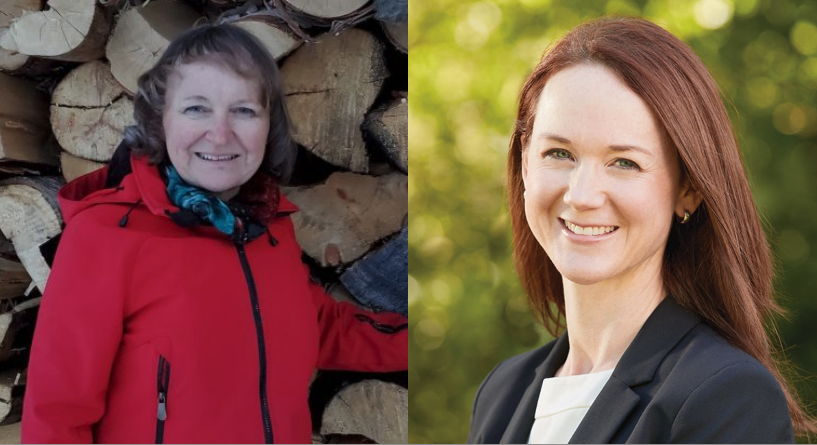
Opinion: Forestry is Canada’s secret (climate change) weapon
November 8, 2021
By Janet Lane and Kate Lindsay
 L to R: Janet Lane and Kate Lindsay.
L to R: Janet Lane and Kate Lindsay. As world leaders gathered in Glasgow [last] week, it served as a reminder that Canada’s forests give our country a powerful advantage that is the envy of most countries on the planet. Canada’s forests and the sustainably sourced products they provide are among the most powerful weapons in Canada’s climate change arsenal as we work to reduce emissions and store more carbon in the coming years.
Canadian forestry is rooted in the principles of sustainability, biodiversity conservation, and supporting forest health and renewal. Our foresters have, for decades, acted as our first line of defense in managing these dynamic ecosystems and have long supported the need for action on climate change.
Canada’s forest sector was one of the few industry groups that got behind The Kyoto Protocol in the late 90s. We were early adopters of industry targets to help Canada meet its Paris Agreement commitments, and we are currently finalizing an action plan to be the blueprint for how the sector will help Canada achieve a net-zero carbon economy by 2050. In fact, we believe we are one of the few industries in the country that can go beyond net-zero – and do it before 2050.
Our solutions are many and they are right across the value chain. By 2030, Canada’s forest industry will be in a position to remove the equivalent of 30 megatonnes of CO2 from the atmosphere each year through innovative efforts in our woodlands operations, at our mills, along our supply chain, and through the products we make that store carbon and can displace more fossil fuel intensive materials. Those removals represent more than 10 per cent of Canada’s goal under the Paris Agreement and is equivalent to taking over 9 million cars off the road.
We know that sustainable forest management can be a positive influence for carbon, renew forests for resilience, lessen the impacts of insect outbreaks and catastrophic fire, as well as be a key part of a ‘whole of society’ approach for adaptation. There are five key and related elements that underpin our climate action plan:
- Climate-Smart Forestry: Advancing forest health and sequestering land-based carbon with value placed on “keeping forests as forests forever” to provide powerful natural climate solutions.
- Long-lived products: Locking up carbon for the long-term through long-lived forest products that store carbon for many years after the trees are harvested.
- GHG emissions reduction: Since 1990, Canada has reduced Scope 1 and 2 GHG emissions by 65 per cent and 45 per cent, respectively, and is contributing to the greening of the electrical grid – and through innovation and by implementing new technologies we can do more.
- Optimal use of forest resources: Optimizing recycling and making Canada a forest bioeconomy powerhouse. In addition to being used to create green energy, forest residues can be used to make renewable bioproducts. In doing so, value is added to what would otherwise be wood waste and we can displace more fossil fuel intensive products in the process.
- Avoided emissions: GHG mitigation benefits when GHG-intensive products are substituted with forest products, as wood products generally release less fossil GHGs over their life cycle than their fuel-intensive alternatives – and wood has the capacity to store carbon over long periods of time.
As world leaders discuss the urgent need for tangible climate action, Canada’s forest sector and its workers offer solutions that are achievable and where the environment and economy truly come together. The time is now to embrace forestry’s unique power to deliver a lower-carbon and circular future rooted in a truly renewable natural resources – our forests and the sustainably sourced products from within them.
Janet Lane is a registered professional forester (RPF) and Kate Lindsay is the senior vice-president of Forest Products Association of Canada (FPAC).
This article was supplied by FPAC and originally appeared here.
Print this page